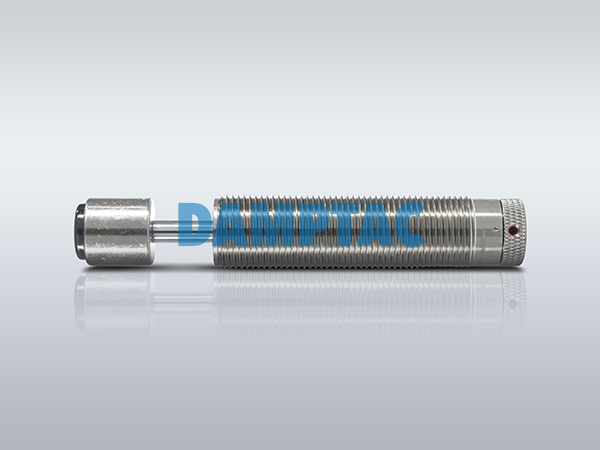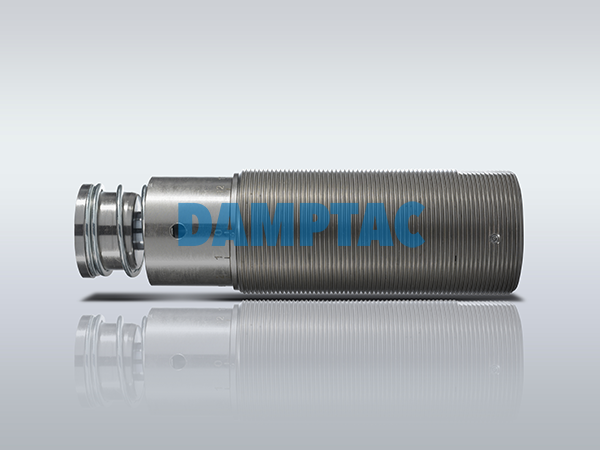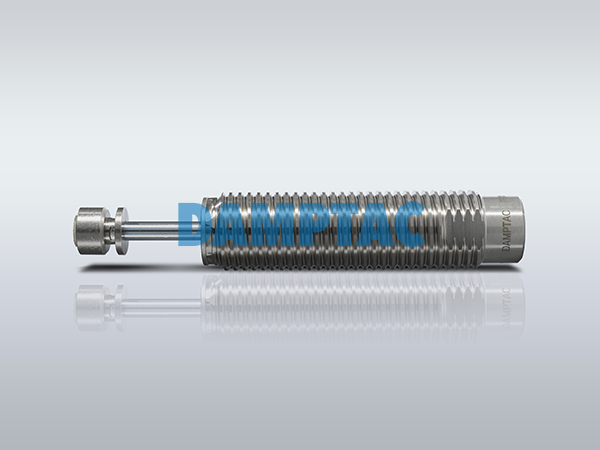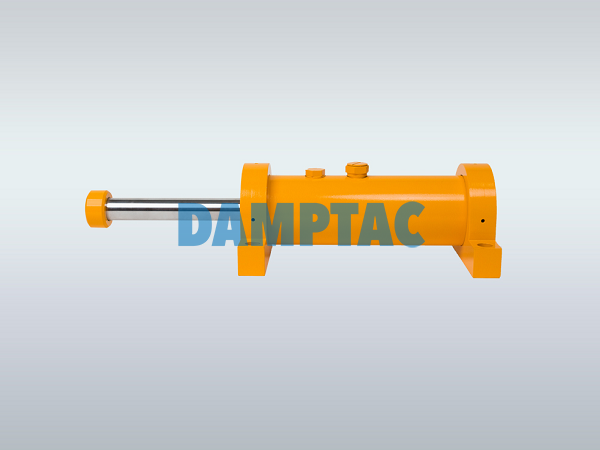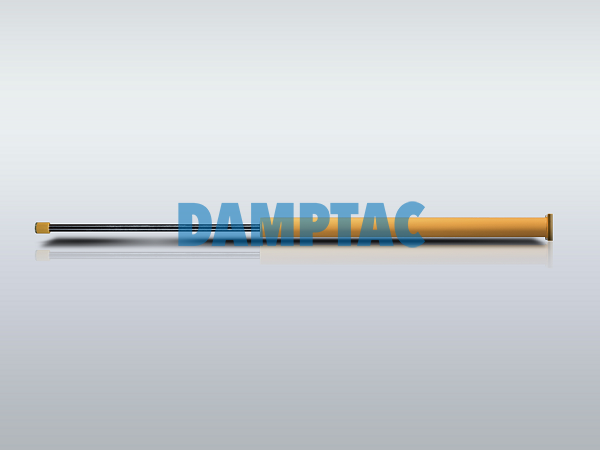Optimal damping properties
The hydraulic high-performance buffer DSC series adopts Germany's leading new airbag buffer reset structure, which greatly expands the buffer capacity (up to 930 kJ) and the stroke range (up to 1500 mm). The DSC series reset structure replaces the mechanical reset spring with high-pressure nitrogen, effectively shortening the length of the buffer. During buffering, the hydraulic oil flows through multiple openings to generate a viscous damping force that converts the impact energy into heat energy and dissipates it. The hydraulic oil discharged from the multiple openings compresses the volume of the airbag when the load is removed, the hydraulic pressure Under the pressure of the airbag, the oil returns to the inner oil chamber and presses the piston rod to reset. The high-performance hydraulic buffers of the DSC series meet global occupational safety standards such as OSHA, AISE, CMMA, DIN and FEM. Compared with the DTH series, the DSC has a similar structure and working principle. However, due to the advanced airbag reset design, the DSC series has lower peak reaction force and more uniform damping effect on memory and other industries.
Installation requirements:
1. The buffer must be fixed to the ground or mechanical equipment with flanges, and the fixing must be firm and reliable without shaking.
If it is attached to a mechanical device, ensure the rigidity and strength of the fixed position, and must not shake or deform due to impact. Any form of improper fixation or weak support can easily damage the buffer and thus not achieve effective protection.
2. If the shock absorber is installed horizontally, make sure that the piston rod direction of the shock absorber is consistent with the impact direction of the load, and its rectilinear angle must be less than 0.5 ° (this is extremely important, because the side force will greatly affect the safety and service life of the shock absorber); At the same time, it is necessary to ensure that the impact contact surface between load and buffer is completely perpendicular to the direction of the piston rod of the buffer, for buffers with stroke at a size of 300 mm or more, it is recommended to use the front flange or double flange installation. The stroke shall be greater than or equal to 600 mm. The shock absorber must necessarily be installed with double flanges (or an additional fixed bracket can be added by the customer).
3. When the shock absorber is installed vertically, make sure that the piston rod direction of the shock absorber coincides with the impact direction of the load. Usually it is a free fall movement, and the verticality of the shock absorber must be guaranteed (the angle) between the piston rod and the vertical direction must be less than 0.5 °. This is extremely important because the lateral force greatly affects the safety and service life of the buffer. At the same time, it must be ensured that the impact contact surface between the load and the buffer are completely perpendicular to the direction of the piston rod of the buffer. The hub is greater than. For 300 mm buffers, the installation of the rear flange or double flange is recommended. For buffers with a stroke greater than or equal to 600 mm, double flange mounting is urgently required (or an additional fixed bracket can be added by the customer).
4. For harsh working environments such as much dust, impurities, rain, etc. It is recommended to add a piston rod protection sleeve to the buffer if you want to extend the life of the buffer.
SPECIFICATIONS
Compact design, high energy absorption, stroke up to 1500 mm, suitable for a variety of applications.
DTH series are customized products, where customers need to specify detailed application parameters. Through professional calculation and precise design, we provide customers with the most suitable products to achieve the most ideal damping effect.
The design meets OSHA, AISE, CMMA standards as well as DIN, FEM and other safety regulations.
Compared with DTH buffers, DSC has lower peak buffering force and more uniform buffering effect, and is widely used in the amusement equipment industry that concerns personal safety.
The outer cylinder body is sprayed with a special anti-corrosion epoxy resin and the piston rod is coated with hard chrome. Therefore, DTH products can be used in environments with high corrosion outdoors or at sea.
Wider temperature range, standard model (-10 ℃ ~ + 80 ℃), special model (-40 ℃ ~ + 120 ℃)
There are many kinds of accessories to meet customers' different installation and use requirements.
Note
Maintenance requirements:
1. Regularly check the surface of the piston rod for dirt and other impurities. If present, wipe them off.
2. Periodically check that the piston rod of the buffer is fully extended. If it is not fully extended, there may be a loss of pressure. Contact Detech for further review. If the customer needs to refill the print himself, please confirm this with Detech.
3. Press the piston rod regularly firmly along the axis of the piston rod to determine whether there is an internal pressure loss in the buffer. If pressure loss occurs, the treatment method is the same as in point 2.
4. Periodically check the appearance of the buffer for obvious oil leaks. If oil leaks are detected, stop using the buffer and contact DampTac for further verification.
5. If it is a frequently used buffer, regularly check whether the installation and fixation of the buffer is still reliable and safe. (For example: check whether the flange mounting screws are loose, etc.)
If it is a frequently used buffer, regularly check the angle between the direction of the piston rod of the buffer and the direction of the load impact to see if it has become larger (whether it exceeds 0.5 °).
Playground equipment
Forklift truck
Port machinery
Crane
Overload emergency protection, etc.
Paper machines
Drop hammer etc.


